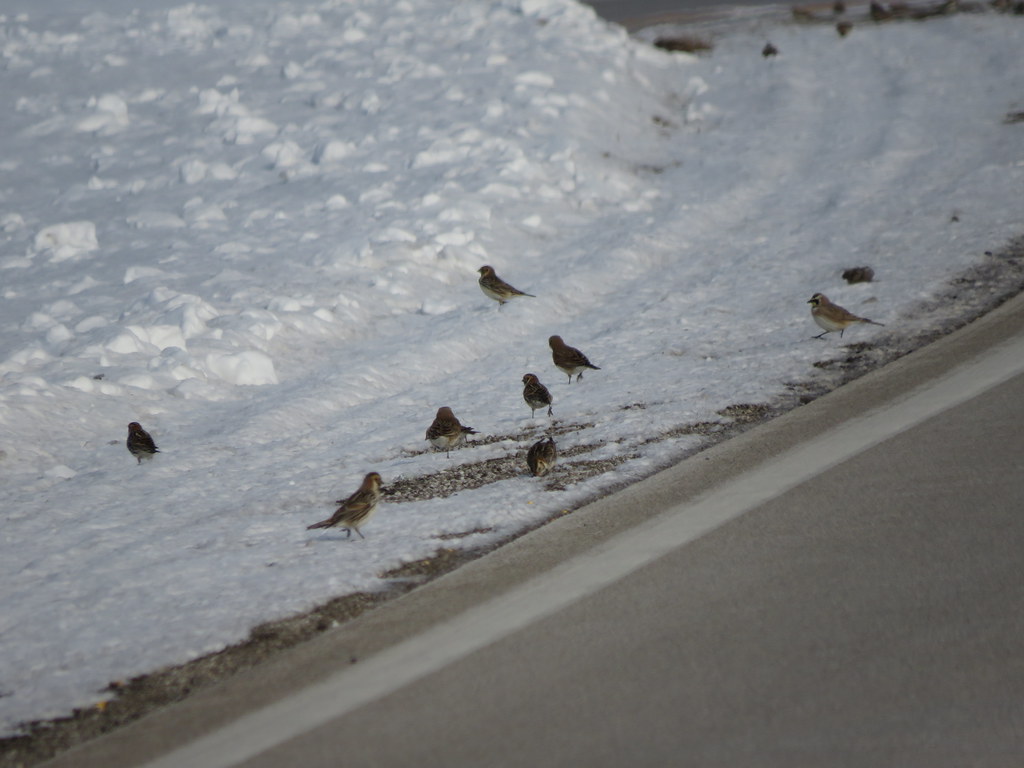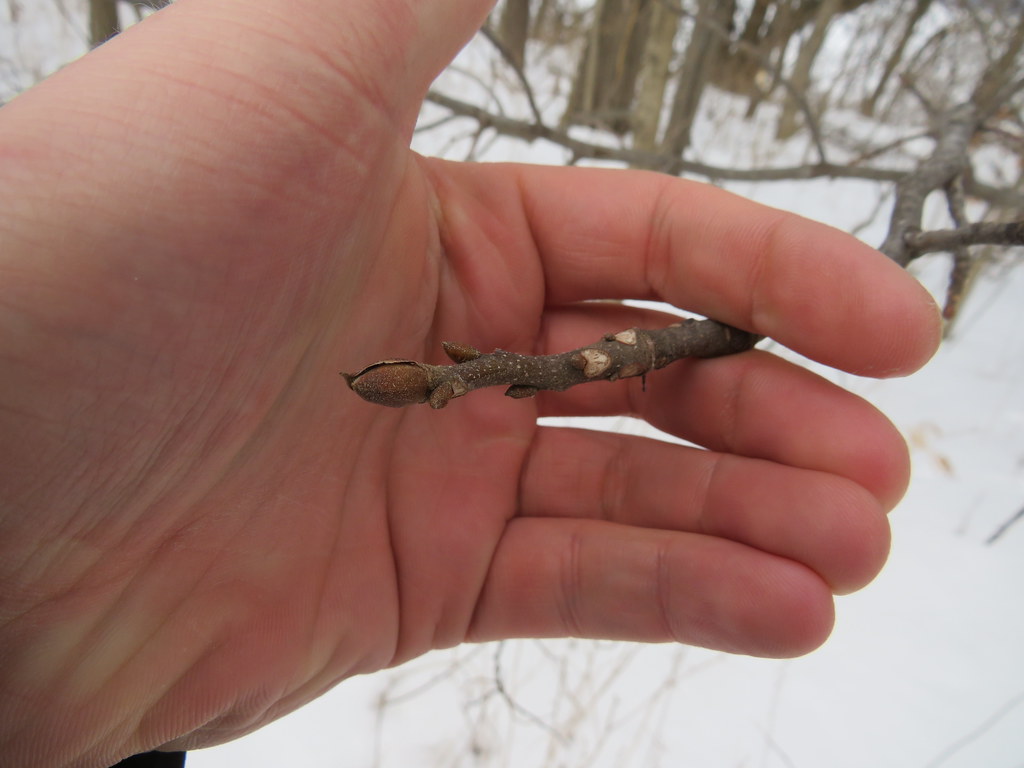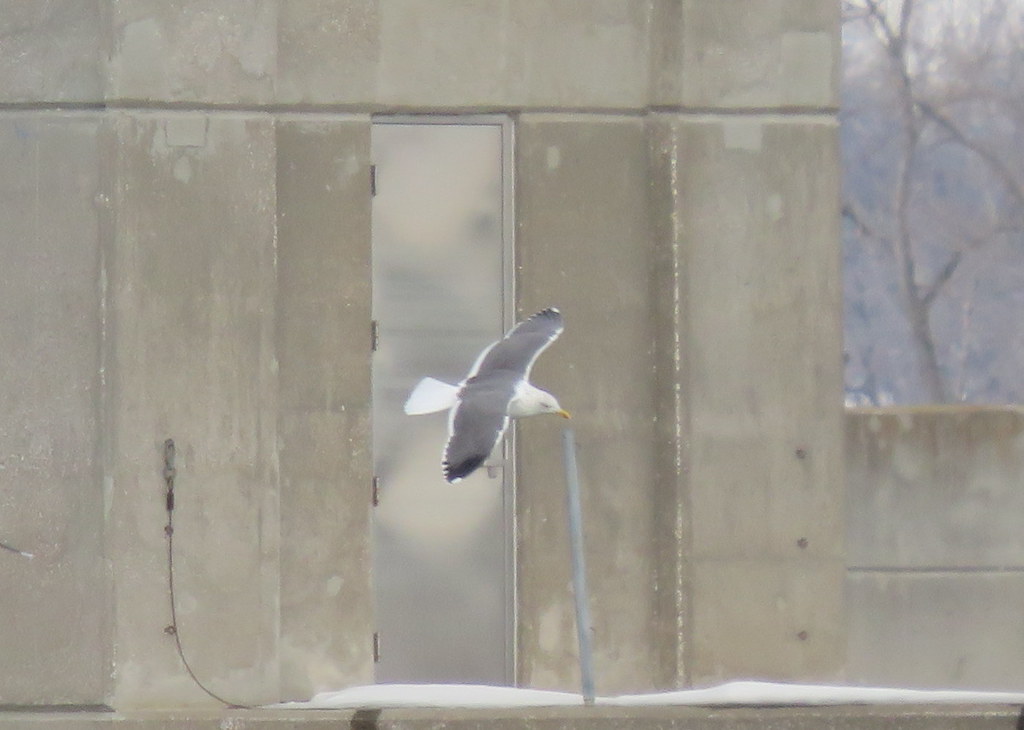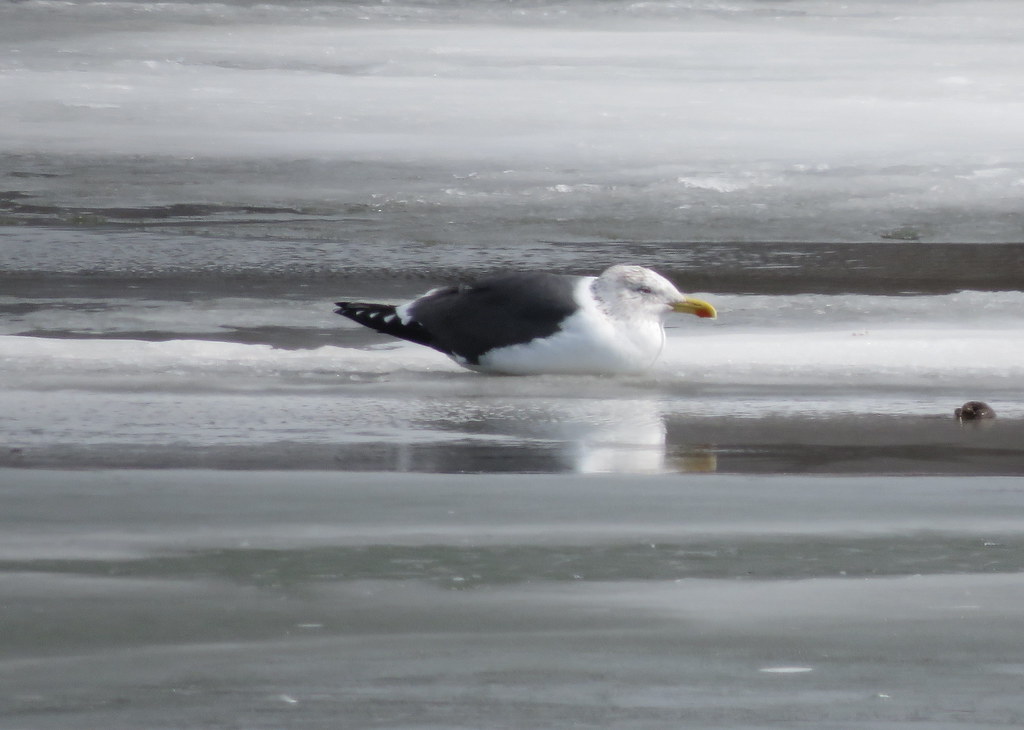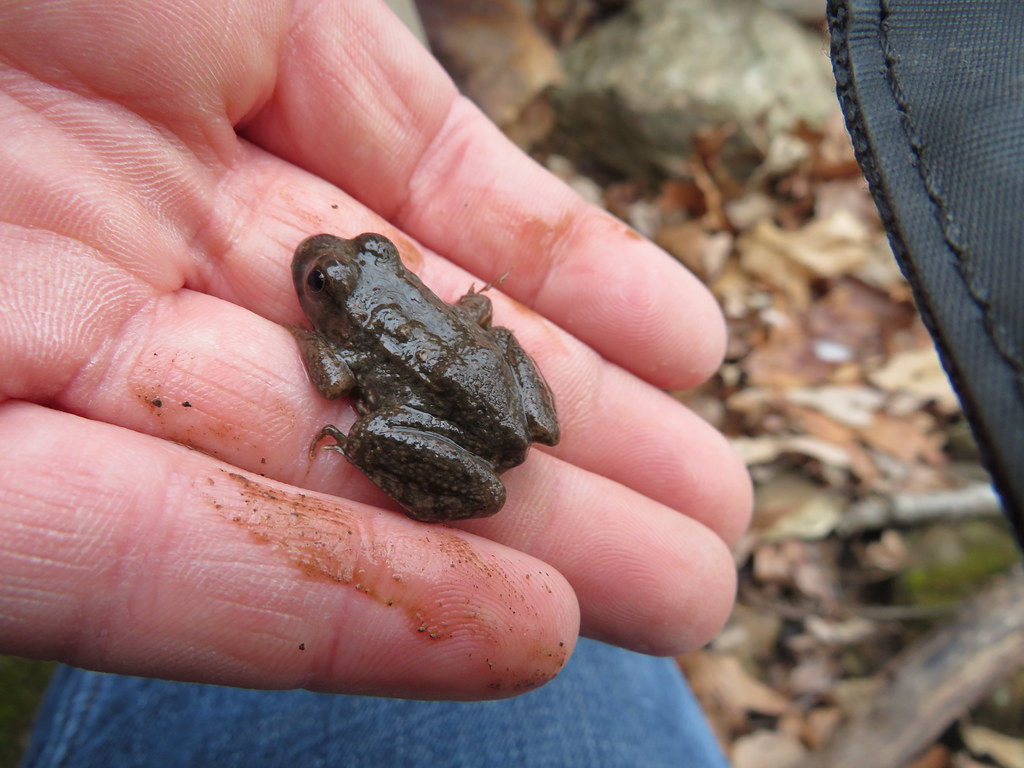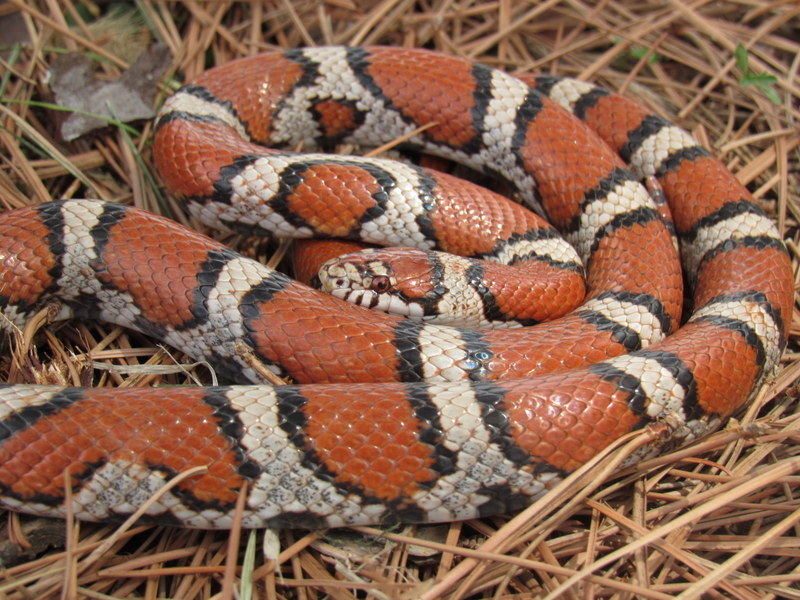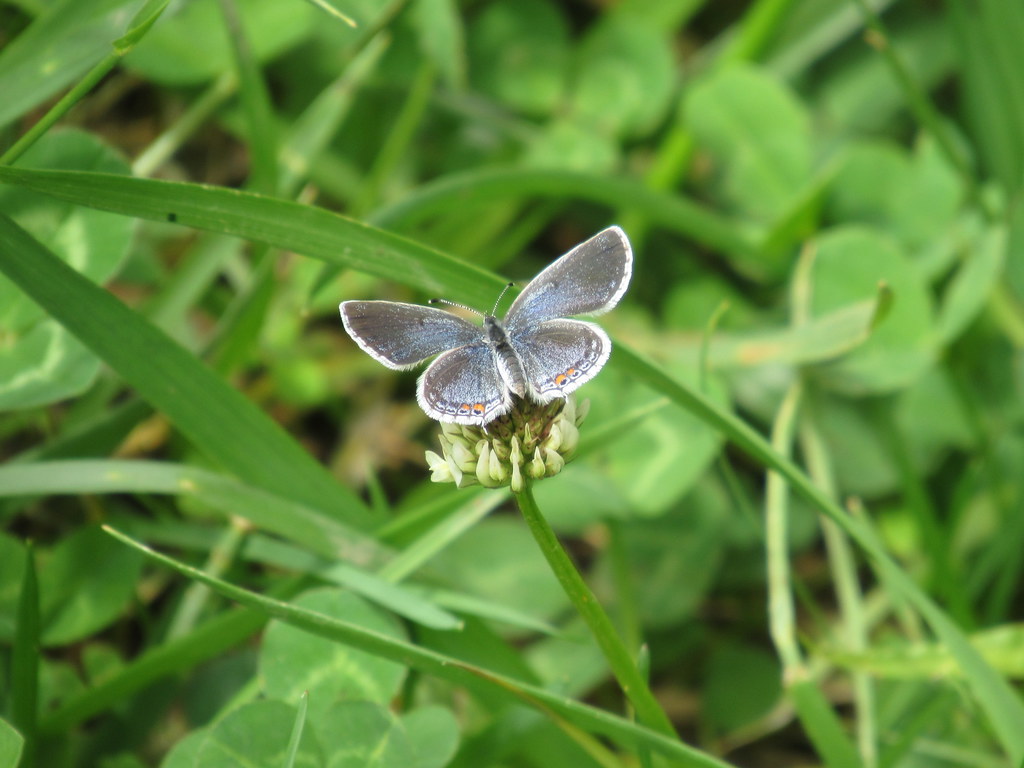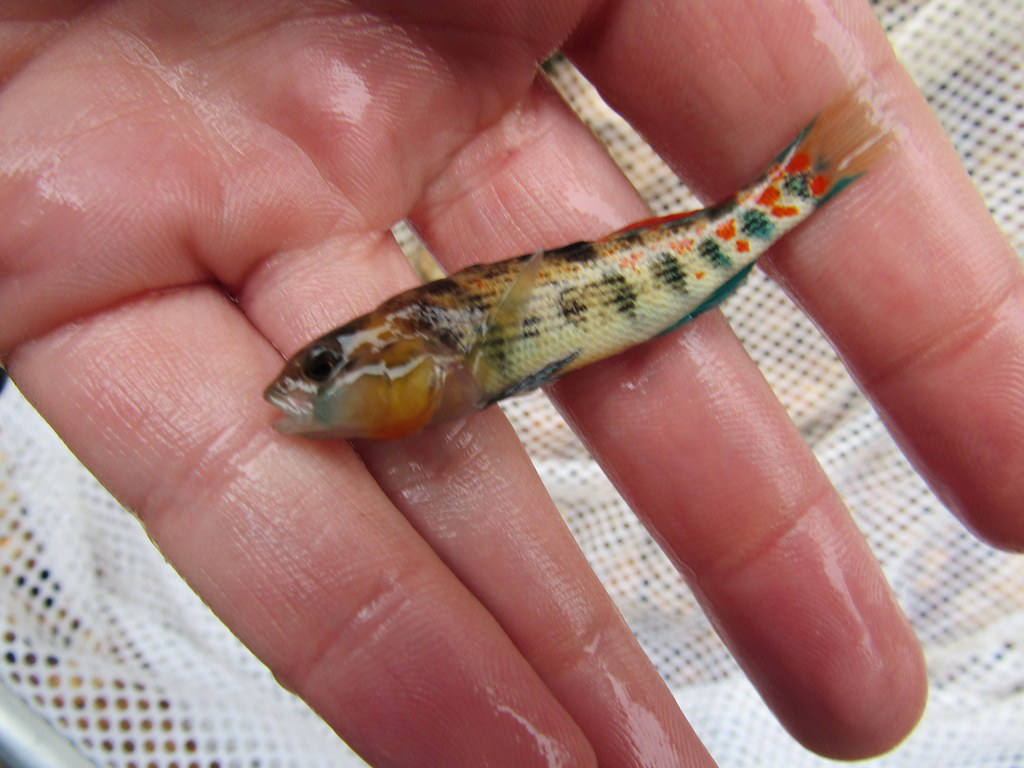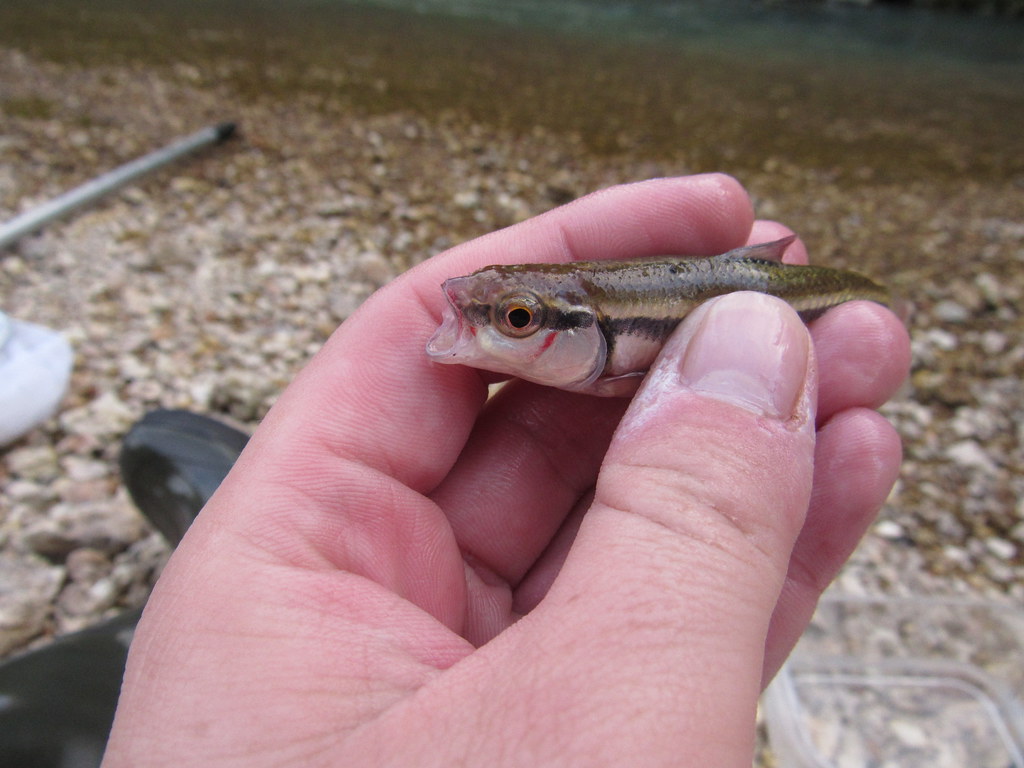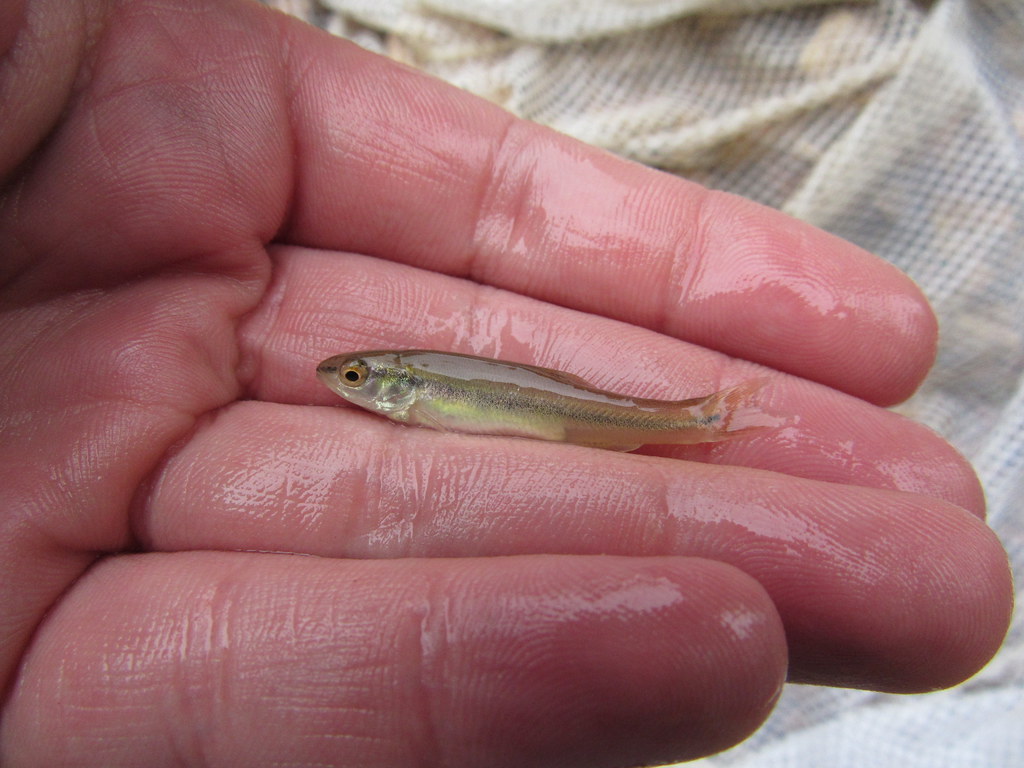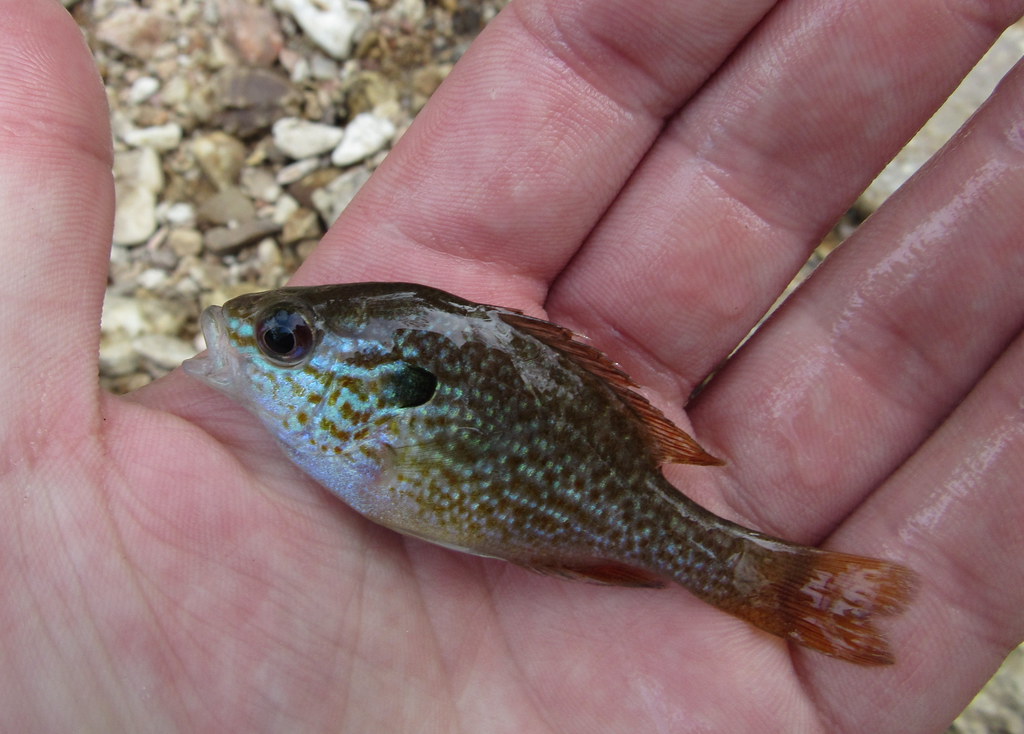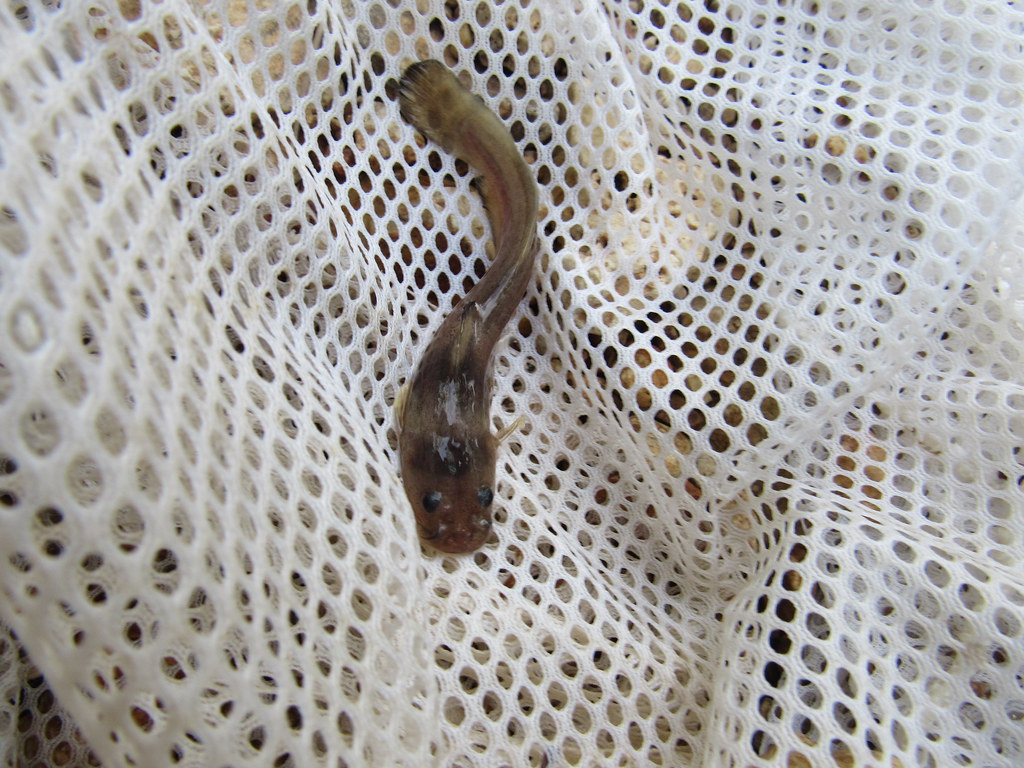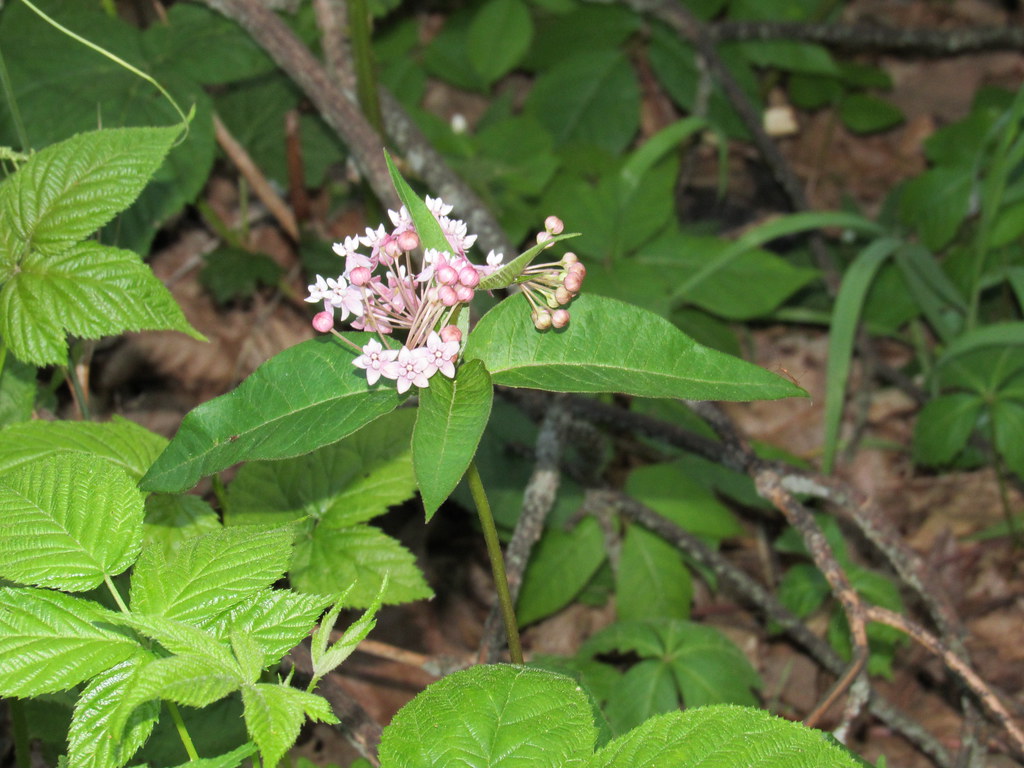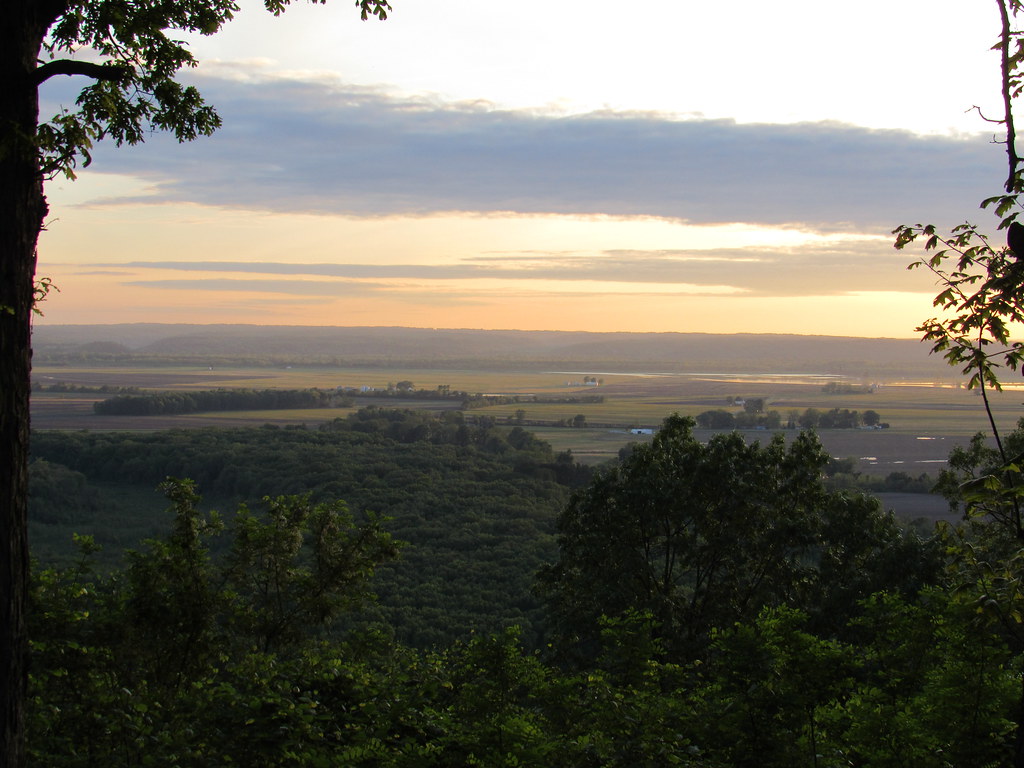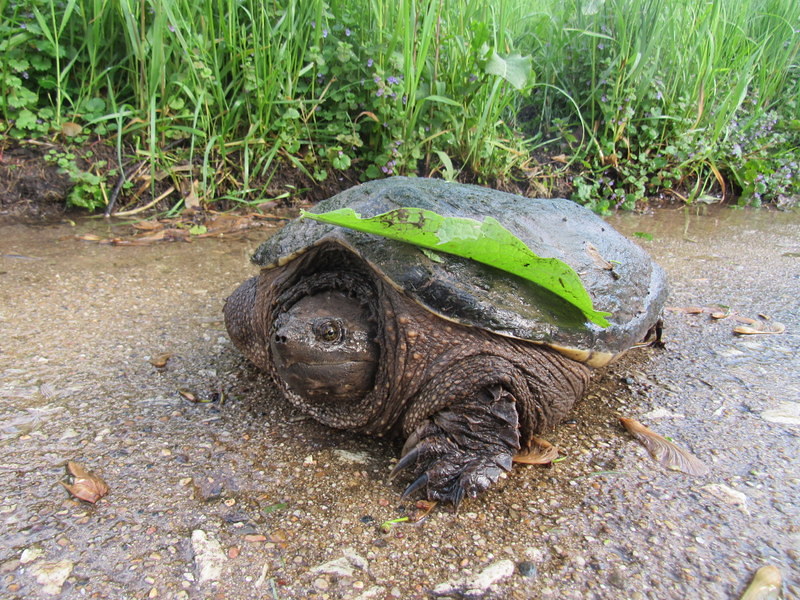I threatened a return to this blog, and by George (aka all the George Foreman Grills I stock at my current temporary job), I’m doing my best to make that happen.
Winter sucks, especially such a cold spell as we had of late here in the central US. Still, cold does bring down a few birds from the North, and as a result I went out looking the other day for some in the sandlands of Mason County, Illinois.
Along the road for much of the drive, Horned Larks and Lapland Longspurs picked at the seeds and gravel, whizzing away over the snow-covered fields as cars passed. A handful of Horned Larks stick around all year long, nesting in what little habitat they can find, but the majority of these two species nest up on the high tundra and only become readily visible down here when it resembles high tundra to the casual observer.
As a reminder that we thankfully do not live in the Arctic Circle, here’s Black Hickory, a common resident in Mason county’s sand savanna, but at its northern limit here. This species becomes much more common in the Ozarks and Ouachitas, as well as eastern Texas. It’s one of a number of Southern Great Plains species that make Mason county the northeastern corner of their range, with Astragalus distortus and Scissor-tailed Flycatchers coming to mind as two other examples.
Another species that’s found a home north of where it likes to be is Northern Bobwhite, a species that has struggled to survive in most of the surrounding counties but seems to be persisting in good numbers in Mason County thanks to its fondness for the remnant sand savanna and dry grassland edges in the region. The “poor” sandy soils here have ironically saved a richer diversity of flora and fauna than can still be found on the “better” blacksoil to the east, northeast, and south.
As it was still remarkably cold, the only open waterway was the Illinois River at Havana, thanks to barge traffic. Dozens of Common Goldeneye could be seen far out, shown as black specks on the water in the photo above.
The water being almost completely frozen over, I retreated southwards towards the Alton area. Here large concentrations of gulls and pelicans foraged in the open waters below the Melvin Price Lock and Dam on the Mississippi River. While the dam kept the river open for barge traffic, ice did buildup around the sides, and I had to make my way carefully down to view the gulls. Or I could’ve been smart and stayed up on top in the parking lot, but I wanted to see the action closer. Don’t do what I do. Statistically I probably should’ve broken like five legs by now.
(There’s a reason I’m not paid to run statistics for people).
Gulls come quite readily to sliced bread, which is not a good long-term meal for a gull but a great way to tempt them a bit closer for a photo and potentially get one of the rare ones. Of course, the rare gulls did not come for the bread, but a few pelicans did so I ceased gull-baiting.
Some of the rarer gulls there included a few Lesser Black-backed Gulls, like the one photographed below. This species has rapidly expanded across the United States, going from a European vagrant and rarity in the 1980s to a regular if uncommon winter bird on some lakes and rivers in the Midwest. It’s unclear where this influx of LBBG’s comes from, where they breed, or why they’ve decided to come to North America instead of Eurasia. Answers to those questions may come in the next few years.
For those wondering why this isn’t called a Gray-backed Gull, the above photo was taken on a cloudy day, while a day later in Illinois I found a LBBG in sunlight. You can see the darker mantle (back color) more readily.
Another gull species, and even more confusing, is the Iceland Gull. I failed to get good photos of the few we saw at Mel Price, so here’s one from the Lake Taylorville excursion a day later.
Note the pale wingtips and back color, as well as the dark eyes and shorter, blunter head. These all help to distinguish this as an Iceland Gull, specifically a Kumlien’s as it has light gray wingtips, not solid white ones as in the nominate subspecies.
Gulls are fun for some people to ID, but after two hours of looking at them, I was ready to move on. So I did, to the much more dignified and proper birding location of a cattle feedlot.
Birding doesn’t have proper and dignified locations, for the most part. The birds go where there is food. Stolen corn from cow feed troughs is perfectly fine fare for Great-tailed Grackles, here on the eastern edge of their wintering range.
At this point, the temperature had reached 50 F for the first time in weeks, so I began to look for herps. A Green Frog or two were the only consolations on that point, as the ice still thickly covered the frozen ponds. Hopefully next time I post on here I’ll have quite a few more salamanders, as BIG salamander migrations are taking place in the Upland South where there’s been significantly more rain and even here in the Great Corn Desert a few adventurous Chorus Frogs have started to croak.
